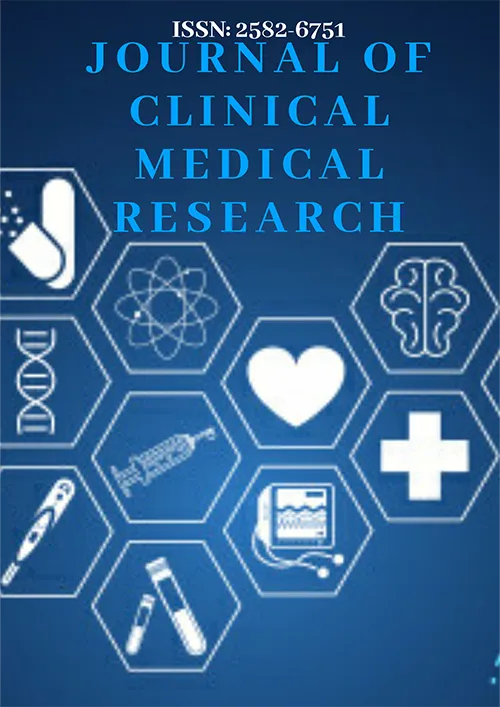Editorial Board Member Removal Policy
The Journal of Clinical Medical Research (JCMR) is steadfast in its mission to advance knowledge in clinical medical research through rigorous peer-reviewed publications. Our Editorial Board Member Removal Policy is designed to establish a transparent and equitable framework for addressing situations that may warrant the removal of an Editorial Board member, recognizing their pivotal role in upholding the journal’s standards and integrity.
Purpose of the editorial board member removal policy
The primary objective of this policy is to delineate procedures and criteria for potential removal, ensuring that actions are taken with meticulous consideration and adherence to ethical and professional standards. By outlining clear guidelines, this policy aims to address various grounds for removal, including ethical misconduct, non-performance, professional misconduct, and involvement with predatory journals and publishers.
Grounds for removal
Ethical misconduct
Plagiarism: Any substantiated instance of plagiarism by an Editorial Board member undermines the integrity of the journal and the scholarly community, warranting immediate removal to preserve academic integrity.
Conflict of interest: Failure to disclose and manage conflicts of interest may lead to removal to uphold the journal’s objectivity and ensure unbiased editorial decisions.
Breach of confidentiality: Unauthorized disclosure of confidential information compromises the integrity of the peer-review process and may result in removal to safeguard confidentiality.
Non-performance
Failure to fulfill responsibilities: Persistent neglect in contributing to the manuscript review process and editorial decision-making may constitute grounds for removal to uphold the efficiency and quality of the editorial process.
Violation of journal policies: Repeated violation of the journal’s policies may result in removal to uphold established standards and ensure compliance with editorial guidelines.
Professional misconduct
Unprofessional behavior: Conduct deemed unprofessional or inappropriate for an Editorial Board member may lead to removal, fostering a professional and respectful editorial environment.
Misuse of position: Any misuse of the editorial position for personal gain or unethical practices may result in removal to ensure that editorial roles are exercised in the best interests of the journal and the scientific community.
Involvement with predatory journals and publishers
Definition and rationale: Affiliation, collaboration, or association with known predatory journals or publishers poses a significant threat to scholarly publishing integrity and may warrant removal.
Criteria for assessment: Editorial Board members will be evaluated for any involvement with predatory entities, with removal being considered based on the severity of the association.
Implications and consequences: Involvement with predatory entities may lead to removal, underlining our commitment to maintaining ethical publishing standards and preserving the journal’s reputation.
Removal procedures
Initial investigation
Complaint submission: Formal complaints against an Editorial Board member may be lodged with the Editor-in-Chief by any concerned party for prompt consideration.
Preliminary assessment: The Editor-in-Chief conducts a preliminary assessment to ascertain the validity of complaints and determine the need for further investigation.
Formal investigation
Appointment of investigation committee: An impartial Investigation Committee is convened to conduct a thorough investigation, ensuring objectivity and fairness in the process.
Opportunity to respond: The accused member is afforded a fair opportunity to respond to allegations and present evidence in their defense to ensure due process.
Evidence gathering: The Investigation Committee gathers and reviews all pertinent evidence to inform a comprehensive decision-making process.
Decision-making
Committee deliberation: The Investigation Committee deliberates on the evidence and formulates a recommendation for the Editor-in-Chief’s consideration.
Editor-in-Chief decision: The Editor-in-Chief makes the final decision based on the committee’s recommendation, which may include disciplinary actions, corrective measures, or removal, depending on the severity of the violation.
Notification and appeals
Notification of decision: The accused member is promptly notified of the decision for transparency, accountability, and trust in the editorial process.
Appeals process: An appeals process is established to allow the accused party to appeal the decision if they believe it was unjust, ensuring fairness and procedural integrity.
Repercussions and replacements
Repercussions
Immediate actions: Depending on the severity of the violation, removal may take immediate effect to mitigate harm to the journal’s reputation and uphold its integrity.
Publication of misconduct: Instances of removal related to ethical or professional misconduct may be publicly disclosed to maintain transparency and accountability.
Replacement procedures
Interim appointments: In the event of removal, an interim appointment may be made to ensure continuity in the editorial process, considering expertise, diversity, and alignment with journal goals.
Permanent replacement: A permanent replacement follows a rigorous nomination and selection process outlined in the Editorial Recruitment Policy to maintain high standards and uphold the journal’s mission.
Continuous improvement
Regular review: Periodic reviews of this policy ensure its effectiveness and relevance, taking into account changes in the scholarly publishing landscape and emerging best practices.
Stakeholder feedback: Feedback from stakeholders, including Editorial Board members, authors, and readers, is actively sought during policy reviews to reflect evolving needs and expectations.
This Editorial Board Member Removal Policy underscores JCMR’s unwavering commitment to upholding the highest standards of integrity and professionalism within its editorial processes, ensuring the continued trust and confidence of the scientific community.

